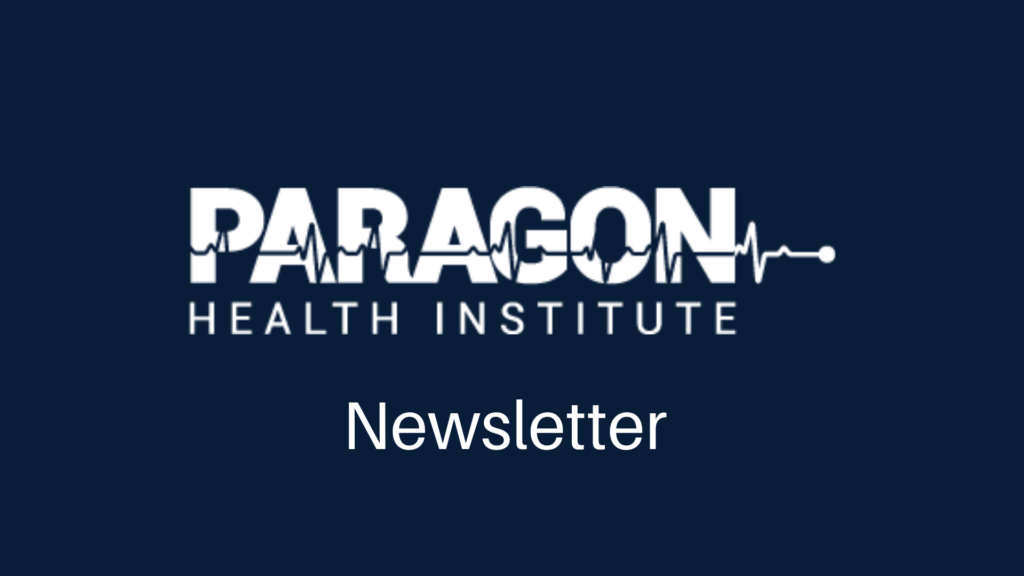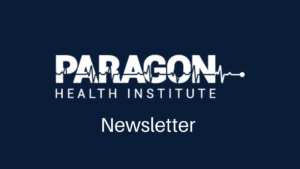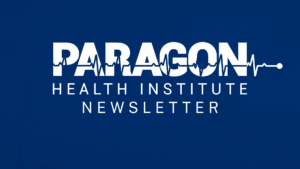While the Russian invasion of Ukraine dominated the last week’s news cycle, health policy was in the news with President Biden’s State of the Union address, as well as ongoing ramifications from Washington’s problematic response to COVID-19.
Checking Health Policy Claims in the State of the Union
In his State of the Union address, the president spoke about lowering health insurance costs and improving the quality of health care, including a goal “to cut cancer death rates by at least 50 percent over the next 25 years.” However, as I testified before Congress last month, what’s important is not the intention behind policies but instead the results.
First, the president said Affordable Care Act (ACA) subsidies in the American Rescue Plan, which went to insurers to reduce the premiums paid by policyholders, “cut the cost of health care insurance.” The president’s assessment leaves out a key fact: subsidies, particularly those designed as poorly as the ACA’s, increase total costs when the taxpayer share is included. In a 2021 Galen Institute paper, I analyzed the numerous problems with expanding ACA subsidies, including that they would largely crowd out private spending with government spending, are inflationary, and would benefit wealthier households more than poorer ones.
Second, the president’s claim that increased subsidies can tame inflation also doesn’t square with economic reality. Higher government spending—such as proposals to significantly increase federal Medicaid spending and expand ACA subsidies—fuels inflation, raising prices throughout the economy. It is fiscal folly for the federal government—which is already running record-breaking deficits—to send more Medicaid money to states that have large surpluses. Transferring more money to states will result in more wasteful government spending, higher federal deficits, and higher inflation.
Third, the president’s proposal to empower the secretary of Health and Human Services to set pharmaceutical prices may save money in the short run, but would harm innovation and reduce Americans’ well-being over time. Former Chairman of the Council of Economic Advisers Tomas Philipson, who is also a Paragon public advisor, estimates that these proposals would lead to 135 fewer new drug approvals over the next two decades. This reduced innovation would translate into a loss of life years many times larger than the life years lost from COVID-19.
Fourth, the president discussed the need to address mental health challenges, including addiction. Importantly, the government should first fully grapple with how its lockdown policies—including the unjustified shuttering of so many schools across the country—failed, particularly for children. A recently released study from Johns Hopkins determined that “lockdowns have had little to no public health effects…are ill-founded and should be rejected out of hand as a pandemic policy instrument.”
Finally, the president spoke about the importance of government watchdogs. Hopefully, this means the administration will concentrate on the program with the greatest waste, fraud, abuse, and misspending—Medicaid. As highlighted in prior newsletters, federal improper Medicaid payments are $100 billion per year. Combined with the states’ share, improper payments likely total $150 billion per year. Federal and state governments have an obligation to eligible individuals who rely on Medicaid as well as taxpayers to drastically cut these improper payments.
Needing Accountability, Not More Spending
Despite the president’s call for a government watchdog to prosecute individuals who steal relief assistance, there’s little indication that future COVID spending will be wisely spent or that more federal COVID money is actually needed.
In a recent New York Post op-ed, Dr. Joel Zinberg, the director of Paragon’s initiative on Public Health and American Well-being, assessed the president’s request for additional COVID spending, concluding, “The initiative is unnecessary, wasteful and will spark additional inflation.”
Zinberg challenged the claim that “more money is needed to vaccinate Americans, including children under five,” when the “FDA has delayed approval of vaccines in that age group and the CDC has not recommended it.” Zinberg also noted that “75% of those 18 and older, including 89% of the most vulnerable who are 65 and older, are already fully vaccinated and about half the country has natural immunity from previous infections.”
Zinberg observed that the administration’s call to reinstate tax credits for paid sick and family leave “seems unnecessary with rapidly declining numbers of cases that are overwhelmingly mild. Moreover,” he said, “as the economy struggles to get people back into the labor force, it seems counterproductive to restore a program that pays people not to work.” Zinberg also discussed that a large amount of past federal COVID funding has yet to be spent:
There has never been a clear accounting of where and how much of this roughly $5 trillion in appropriated [COVID] money has been spent. While the federal government has committed to spend the majority of these funds, it has yet to spend all that it has formally committed. Moreover, roughly $500 billion has not even been obligated yet by any federal agency.
States and localities have only spent a small fraction of the money they have received. In October 2021, The Associated Press reported that over half of the states and two-thirds of the 90 largest cities had not spent any of their American Rescue Plan money.
The AP found that states had only spent 2.5% of the funds they received, and large cities spent 8.5% of their money. And much of the money has been diverted to uses other than COVID relief.
Missing the Mark: Test Kit Program
Zinberg also chronicled in National Review the failure of the administration’s COVID test kit program.
When the president “announced on December 21, 2021, that his administration would purchase and distribute 500 million rapid, at-home tests to Americans, it was already too little too late,” he wrote. “And when … tests were delivered weeks later, cases of the Omicron variant — which had spread unabated throughout the vaccinated and unvaccinated populations — were already plummeting…”
Despite earlier calls highlighting the need to develop antigen-based rapid tests, the FDA dragged its feet leaving U.S. testing capability dangerously insufficient. According to Zinberg:
Officials fretted that antigen tests might be slightly less accurate than PCR tests even though convenience and the ability to test repeatedly more than offset the risk of erroneous results. The tests remained far less available and more expensive than in Europe. […] The administration should have made large purchases of tests ahead of time, an approach that was so successful for vaccines under Operation Warp Speed, but it failed to do so…
Following the Science at Last
The Centers for Disease Control (CDC) is finally catching up to the rational approach to mask mandates that many states—including both Republican and Democratic-led states—have taken for months. In a March 3 op-ed in City Journal, Zinberg asks, “what took so long?”
“The rationale for the change is to move from measuring community transmission to measuring how much strain the virus is placing on a community’s health-care system,” wrote Zinberg. “But the old system never made much sense.”
“The CDC’s revised guidance is welcome and long overdue,” wrote Zinberg. “Its original guidance was of limited value and became immaterial with the Delta and especially the Omicron waves. The CDC says that it follows the science, but it would be much better to lead.”
Analyzing government policies and management of health programs based on economics and evidence is a crucial part of Paragon’s work. In the coming few months, we will also be releasing several studies, including ones about smart reforms to government programs that would expand health care choice and competition and improve government stewardship of programs.
Best,
Brian Blase
President
Paragon Health Institute




